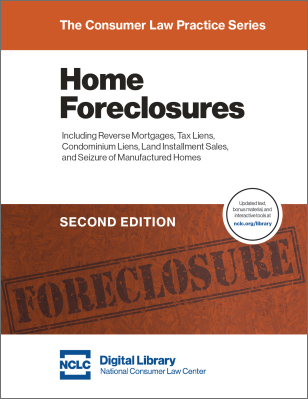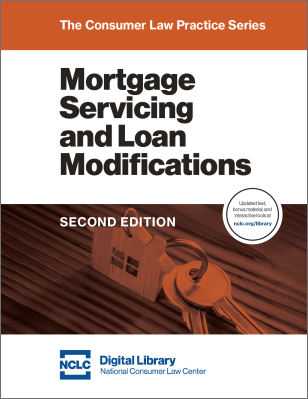The last year has seen dramatic activity concerning RESPA servicing litigation, with over thirty federal circuit and district court decisions interpreting the new CFPB mortgage servicing rules, amending Regulation X. Many of these decisions address issues of first impression and are critical to an understanding of consumer rights concerning mortgage servicing.
Roadmap to 30+ Decisions
These 30+ decisions cover many important issues—issues that can be grouped into 13 different topic areas. To learn how all these cases impact the CFPB mortgage servicing rule, the best way is to log onto the just-updated online version of NCLC’s Foreclosures and Mortgage Servicing and follow the links below for each of the thirteen topics (subscribers only—others can gain access at www.nclc.org/bookstore).
- Duplicative and overbroad notice of error, § 3.2.2.4.4;
- Requirements for requests for information, § 3.2.2.6;
- Request for information about a loss mitigation application, § 3.2.2.6.2;
- Requirements for notice to borrower about using designated address to send notice of error or request for information, § 3.2.2.8;
- Requirement for servicer to conduct a reasonable investigation of the alleged errors in a notice of error, § 3.2.2.10.5;
- Servicer’s duties upon receipt of a loss mitigation application, § 3.2.8.2.3;
- Servicer’s duties upon receipt of “facially complete” application, § 3.2.8.2.5;
- Servicer requirement to acknowledge and evaluate a “complete” application, § 3.2.8.2.6;
- Appeal rights for loan modification denials, § 3.2.8.5;
- Dual tracking restrictions after initiation of foreclosure, § 3.2.8.7.5;
- Determining the loss mitigation timeline in relation to a scheduled foreclosure sale, § 3.2.8.7a;
- Application of the duplicative loss mitigation request exclusion, § 3.2.8.8.2;
- Scope of actual damages recoverable under RESPA, § 3.2.10.2.
Sample Excerpt
The following excerpt provides an example of how NCLC’s Foreclosures and Mortgage Servicing puts the thirty plus new decisions in context of the CFPB mortgage servicing rules and provides practical advice on how to utilize or distinguish these recent court decisions:
Unfortunately for borrowers, some courts have ignored the significant regulatory changes implemented by the CFPB with respect to requests for information. Although the CFPB has made abundantly clear that borrowers may obtain information about loss mitigation applications using the request for information procedure, some courts continue to hold that a request for information about loss mitigation is not valid, because it is not related to the servicing of the loan./221/ This premise is false as a factual matter, and it applies a legal test that has been repudiated by the CFPB (requests need only relate to the mortgage loan, not its servicing). Several of these courts also have erroneously equated a request seeking information about loss mitigation, such as the servicer’s reasons for denial of an application, with a general request to be offered a loss mitigation option./222/ Advocates should take care to inform the courts of the CFPB’s interpretation of section 1024.36 when responding to motions to dismiss.
Nash v. PNC Bank, 2017 WL 1424317 (D. Md. Apr. 20, 2017) (finding statutory definition of “servicing” controls over § 1024.35 and limits scope of request for information); Bracco v. PNC Mortg., 2016 WL 4507925 (M.D. Fla. Aug. 29, 2016) (court erroneously concluded that request sent after Jan. 10, 2014 cannot seek information about a loan modification request); Hudgins v. Seterus, Inc., 2016 WL 3636859 (S.D. Fla. June 29, 2016) (court erroneously concluded that request sent after Jan. 10, 2014 must relate to loan servicing and distinguished decisions permitting requests for information about loss mitigation by suggesting that the plaintiffs in those cases had also brought claims for violation of § 1024.41).
See, e.g., Turner v. Nationstar Mortg., L.L.C., 2017 WL 167724 (S.D. Ind. Jan. 17, 2017) (erroneously finding that request for information about how the servicer calculated the proposed monthly payment under a loan modification was not a request regarding the servicing of the loan because it was a request for a loan modification).



